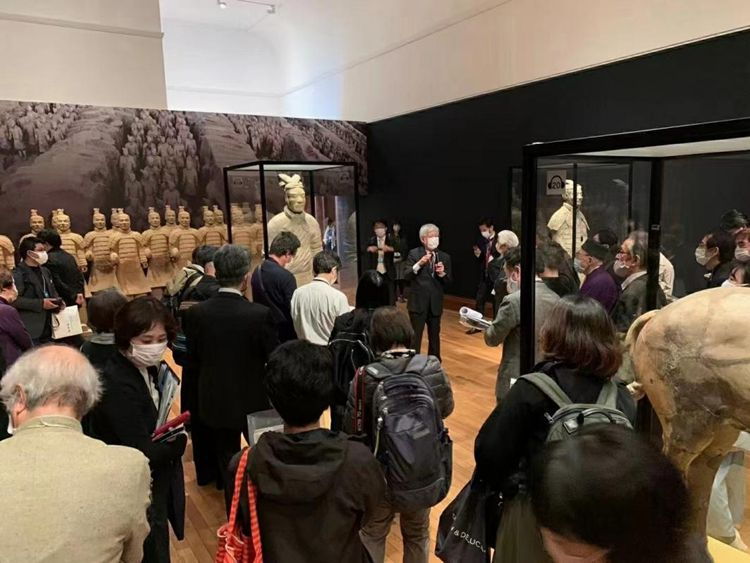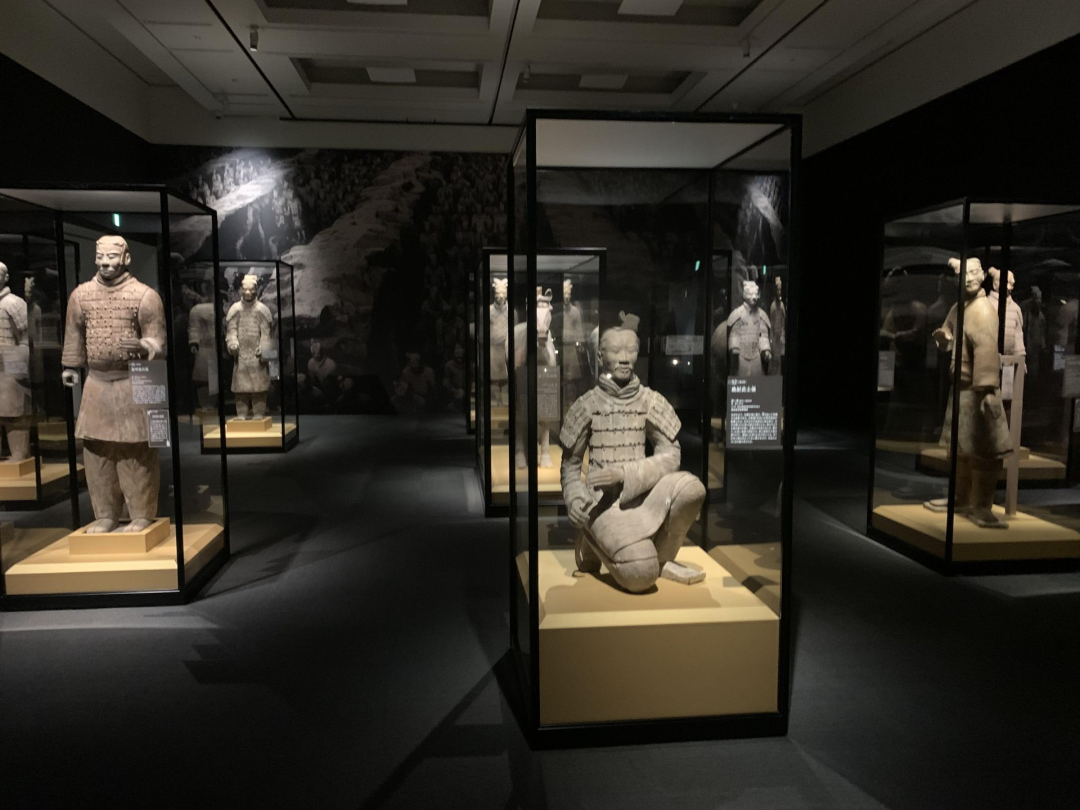source: editor:Zhang Wenni

Poster outside the exhibition venue
The exhibition "Terracotta Warriors and Ancient China: Heritage from the Qin and Han Dynasty" recently opened at the Ueno Royal Museum in Tokyo. Terracotta Warriors and Horses, as well as hundreds of precious cultural relics from the Zhou, Qin and Han dynasties, traveled from Xi'an and other places in China, attracting many long-awaited Tokyo residents. The light of mutual appreciation of civilizations shone brightly.
The exhibition aims to commemorate the 50th anniversary of the normalization of China-Japan diplomatic relations, and this stop in Tokyo is the 4th leg of its nearly year-long traveling exhibition in Japan. The exhibition has been on display in Kyoto, Shizuoka, and Nagoya, Japan, since March 25, 2022.

On-site scene of the exhibition

Inner scene of the exhibition venue

On-site scene of the media preview
The exhibition brings together more than 120 relics from 17 cultural and museum institutions, including the Shaanxi History Museum and Emperor Qinshihuang's Mausoleum Site Museum. The relics span more than 1,000 years, from the Western Zhou Dynasty to the late Eastern Han Dynasty. They together show the significant features of the development of China's historical period, from the Western Zhou Dynasty, the Spring and Autumn Period and the Warring States, to the Qin and Han Dynasties. The exhibition also demonstrates the results of recent research on the history and culture of the Qin and Han Dynasties, which are particularly reflected by the research on Emperor Qinshihuang's Mausoleum and Han Yangling Mausoleum.
Since 1976, the Terracotta Warriors and Horses have been exhibited abroad (border) more than 270 times, causing a sensation of "Chinese cultural relics" in 49 countries and territories on five continents. On some level, the Terracotta Warriors and Horses could be the most well-known Shaanxi element overseas.
To well organize a cultural relic exhibition abroad, understanding the local culture is the key, on top of the accumulation of cultural relics expertise, good foreign language communication skills, and teamwork skills. To comprehend the local culture is to stand on the position of the local audiences, and then interpret the Chinese story behind the relics. All the related work requires a lot of communication in the early stage of an exhibition project, so it takes a very long time to prepare an overseas cultural relic exhibition. The time span could be as little as 3-5 years or even 10 years.
Tang Qishan, the curator of the current exhibition, said, "This feast of cultural relics is a powerful display of Xi'an's history and culture, and a vivid telling of the story of Xi'an. While people get connected to the cultural relics, they might wonder about the hometown of the relics."